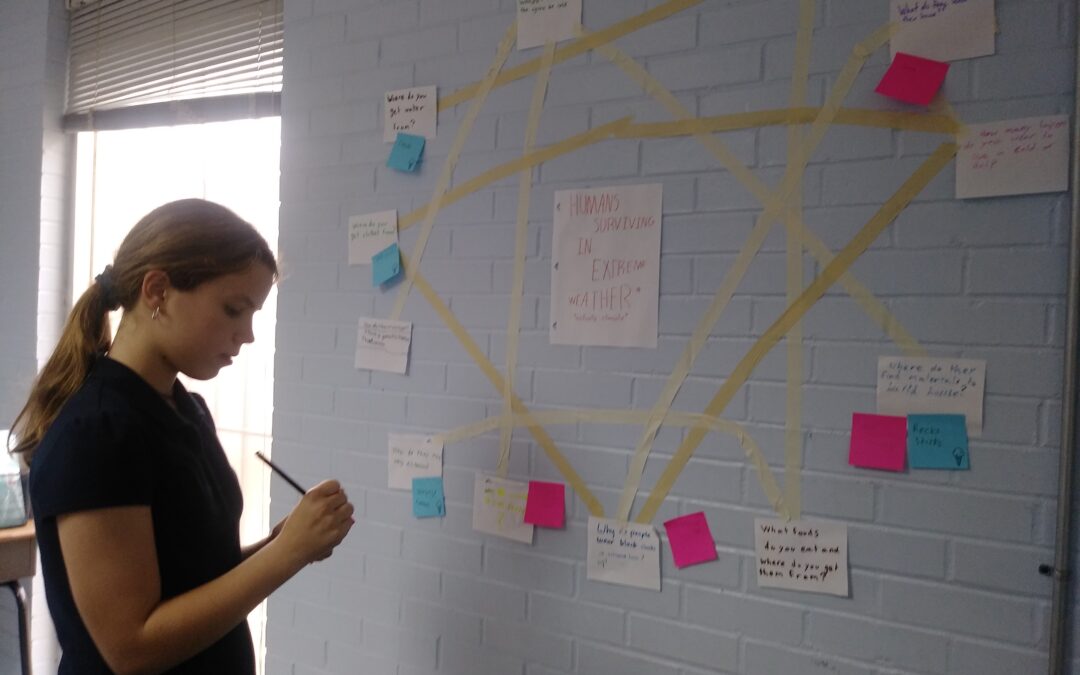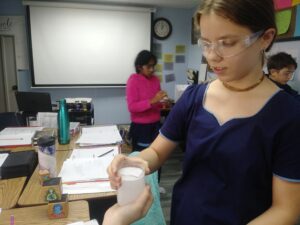 Humans have long lived in places that seem impossible to survive in. How are people able to live in regions with freezing temperatures or scorching heat? Our Middle School students’ task was to help make it possible for people to live in these places. Each student selected and researched a region with an extremely hot or cold climate. After exploring the causes of such extreme climates, they used their knowledge of science to design, build, and test a product that makes it more comfortable for people to live in this region.
Humans have long lived in places that seem impossible to survive in. How are people able to live in regions with freezing temperatures or scorching heat? Our Middle School students’ task was to help make it possible for people to live in these places. Each student selected and researched a region with an extremely hot or cold climate. After exploring the causes of such extreme climates, they used their knowledge of science to design, build, and test a product that makes it more comfortable for people to live in this region.
Topics students had to dig into in order to build their prototypes, include:
- Endothermic and Exothermic Chemical Reactions
- Thermal Energy Transfer, Conductors, and Insulators
- Seasons and Climate
- Oceanic and Atmospheric Currents
- Weather Forecasting
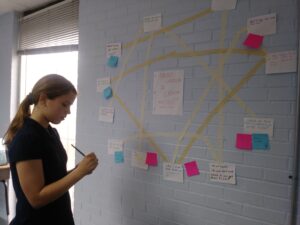 We spent 12 weeks exploring these topics, so it was vital that students developed a way to organize their ideas. We created a “Concept Wall”, which grew every day. On this wall, we were able to ask questions, organize our ideas, make connections, and revise our original thinking in light of new evidence.
We spent 12 weeks exploring these topics, so it was vital that students developed a way to organize their ideas. We created a “Concept Wall”, which grew every day. On this wall, we were able to ask questions, organize our ideas, make connections, and revise our original thinking in light of new evidence.
Below, you can see one example of how students started with a question, added an initial thought, then continued adding detailed diagrams and explanations as they learned more about the topic.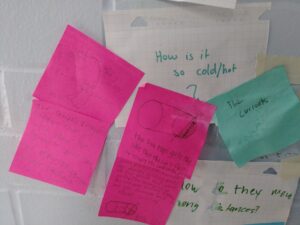
Finally we got to the students’ favorite part: the test, of course! Instead of a long paper and pencil test, students were given an engineering project that required them to apply their new knowledge to show how well they understand the material. 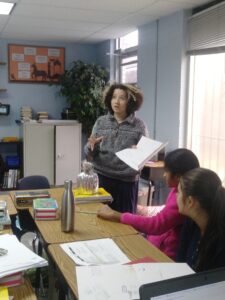
Students were graded on how well they could:
- Define the problem and brainstorm solutions
- Design, build, test, improve, and re-test an actual prototype
- Diagram their final design and explain how it works, using a variety of scientific terms and concepts
- Create a poster to present their prototype to the class
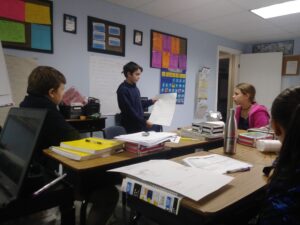
*Reported by Sita Figueroa. Pre-COVID-19.

